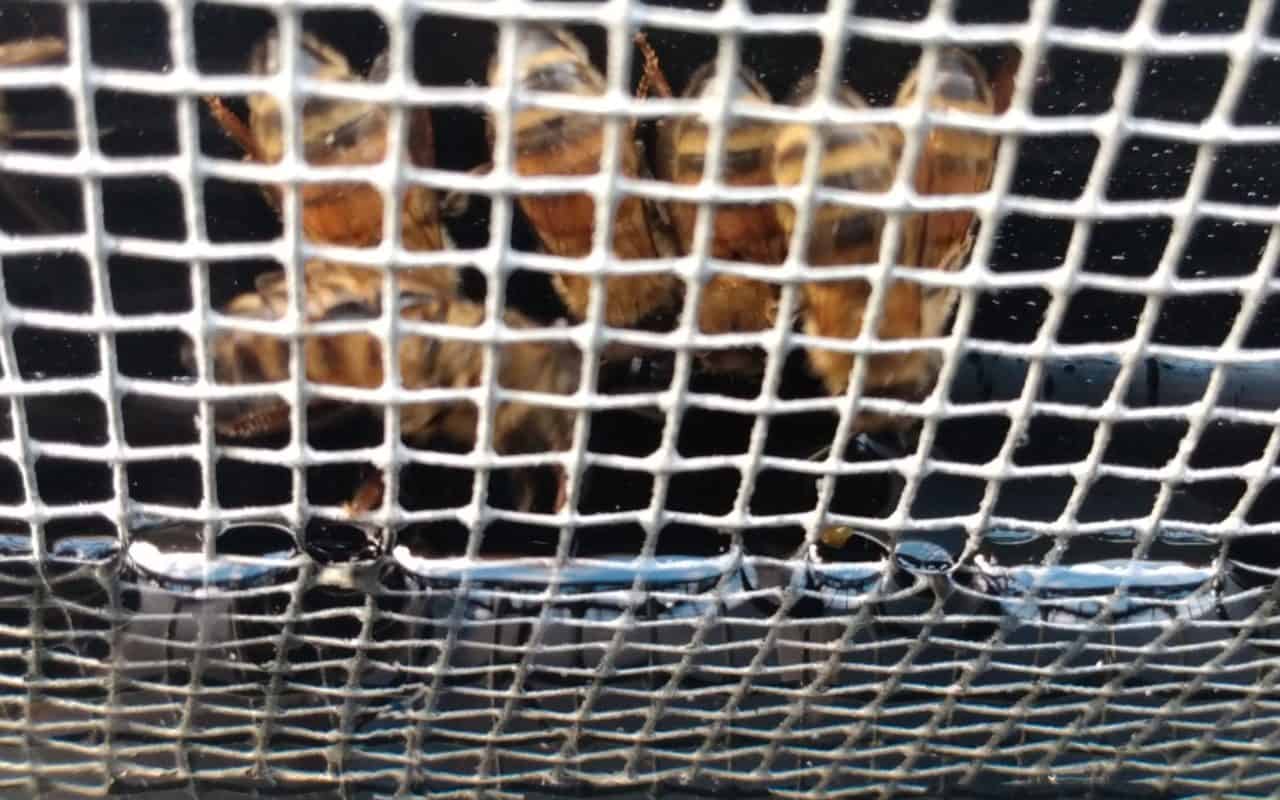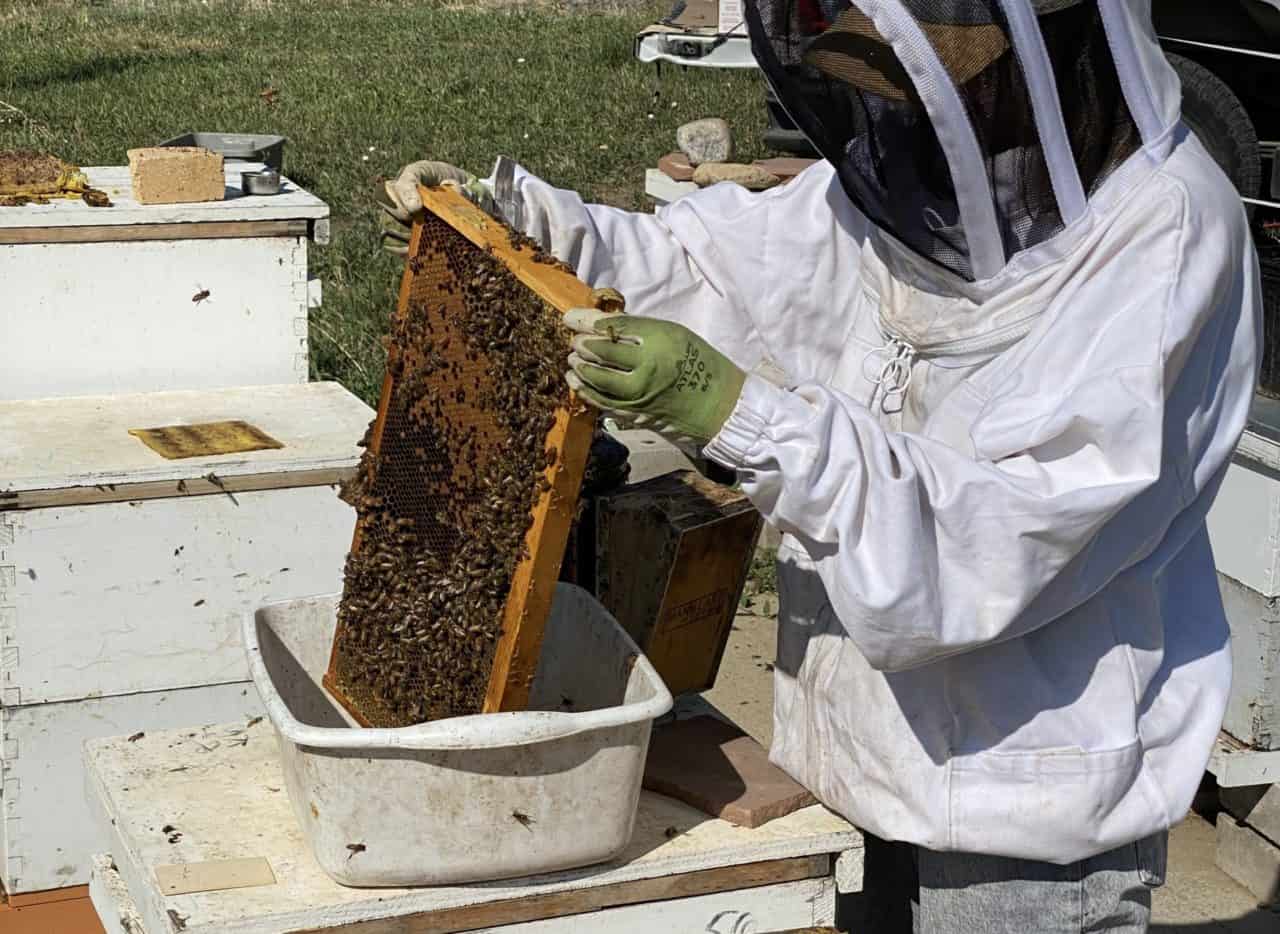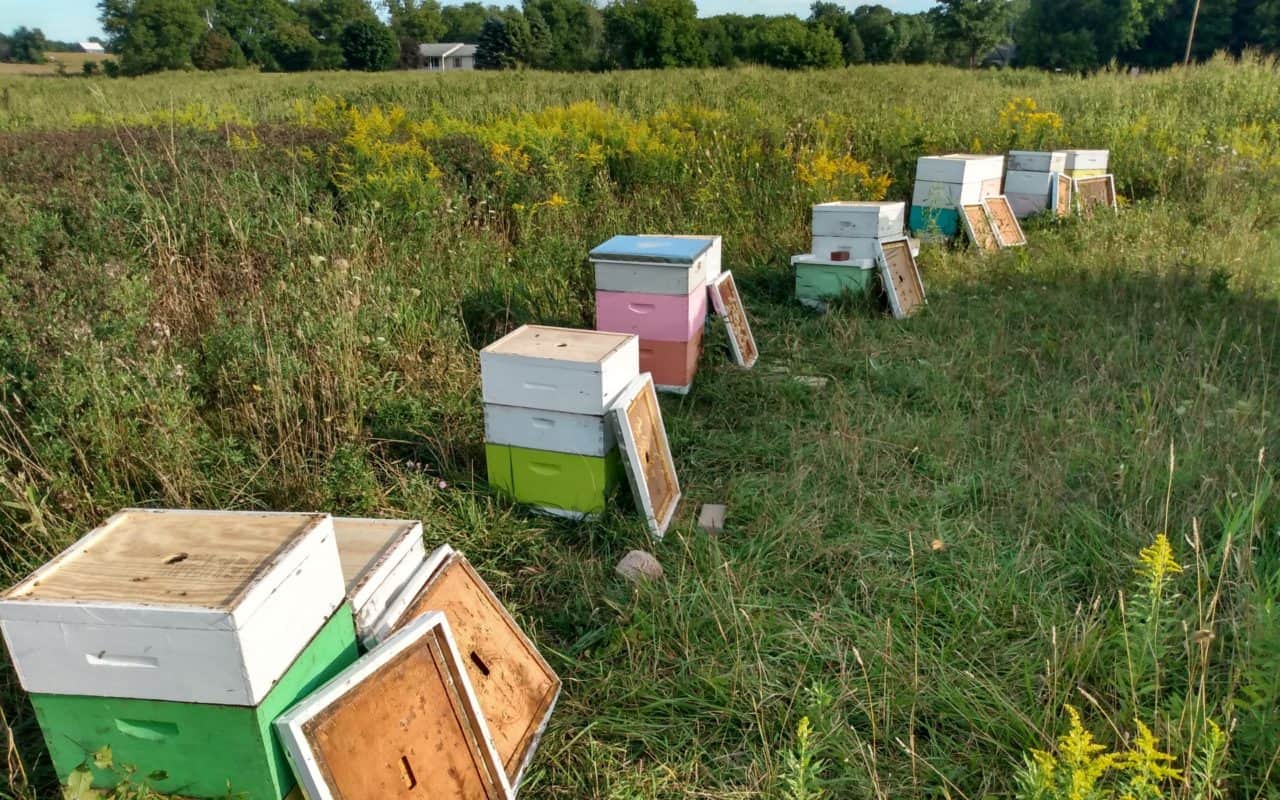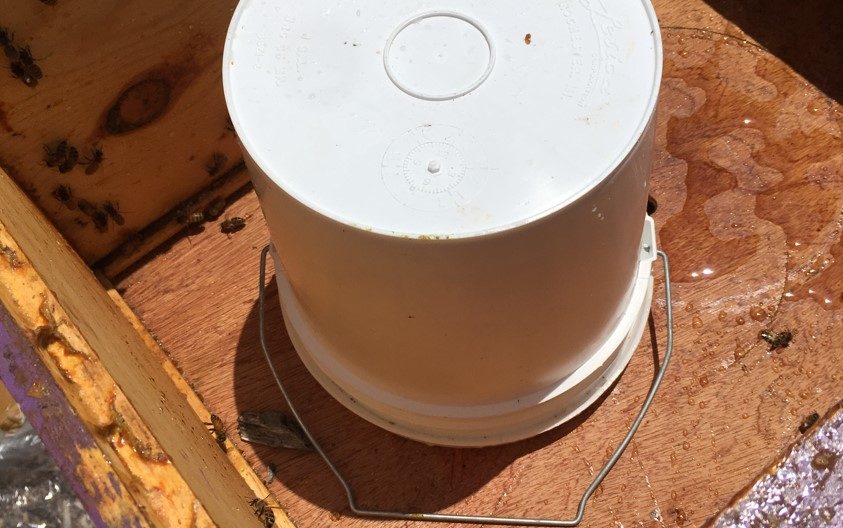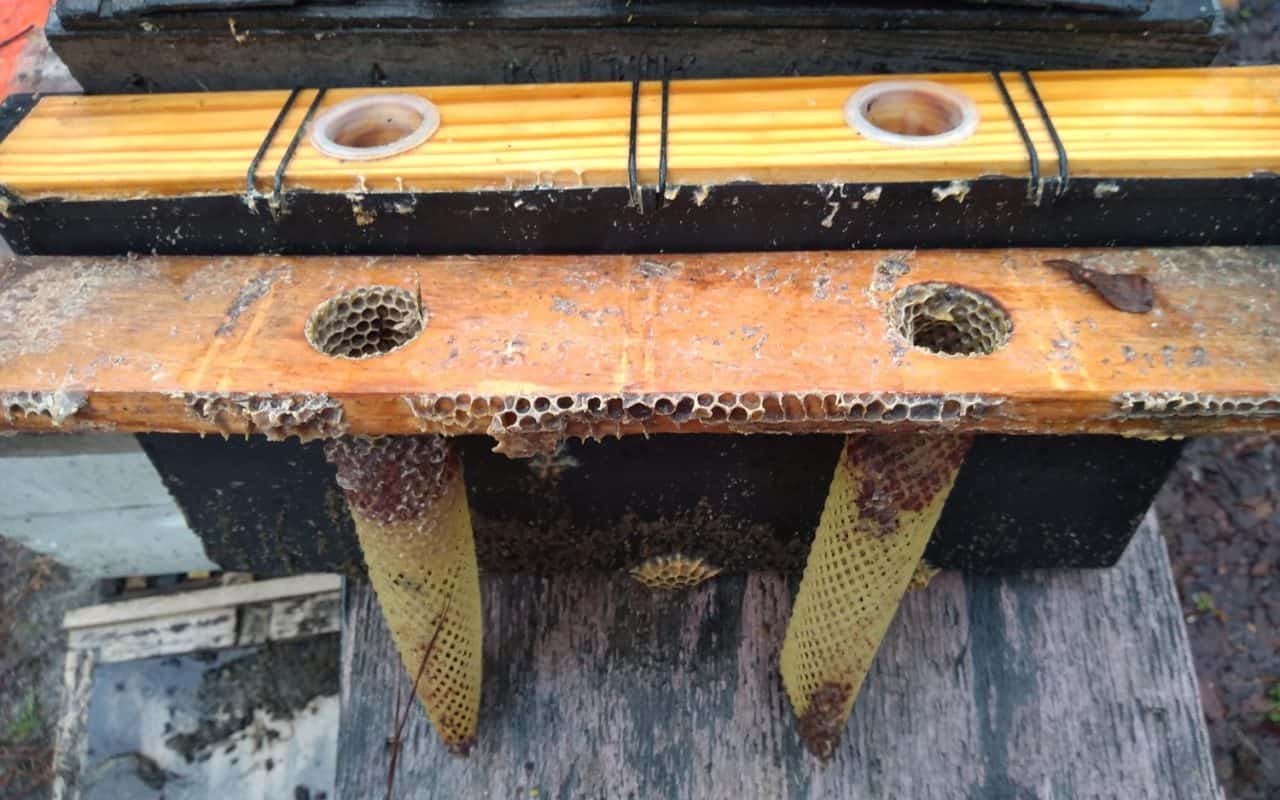Collaborations That Give Back - Featuring Dr. Katie Lee Authors: Rachel Kuipers and Eric Malcolm BIP is frequently contacted by beekeepers across the country who have experienced what we suspect are mite-related losses, not realizing their mite loads throughout the course of the season. Recent findings indicate that even those maintaining the commonly suggested 3% action threshold may still lose colonies to mite-related issues. Previously, industry standard for the Varroa action threshold—the threshold at which beekeepers should take action against the mites to avoid mite-related damage to their colonies—was a 3% infestation rate or higher throughout the season. The damage threshold, or the point at…
Category: Basic Beekeeping
Small Mammal Big Nuisance
One of the queen producers I work with, Joy Pendall, recently told me of some pest and flea problems she'd been having in a few of her yards. When she first told me about the damage these critters were causing I couldn't believe it - these mammals are not usually much of a pest for beekeepers to contend with, aside from occasionally chewing on the edges of bee boxes to wear down their constantly growing teeth. But Joy and her crew's stories and photos showed what an impressive amount of destruction that these little varmints managed to accomplish. The pictures (shared in this blog) show…
Feeding Bees – Top Feeders
Feeding colonies sugar syrup is something most beekeepers do, generally in the spring and/or fall. The purpose of feeding syrup can be to stimulate colony growth, sustain them through a dearth period, or build and maintain adequate stores for wintering. There are multiple methods for feeding syrup, each utilizing different pieces of equipment and having their own pros and cons. Previous blog posts discuss the use of gravity feeders and frame feeders, which are the two most commonly used feeders. A top feeder is a third method for feeding that is also a good choice under certain circumstances. As the name suggests, a top feeder…
Scooping Bees
To keep healthy bees, beekeepers must monitor their colonies for harmful pests and diseases. This commonly includes testing for the presence and abundance of Varroa, Nosema, and (less frequently) a number viruses and pesticides. To perform these tests beekeepers need to sample their bees. It is not that hard to sample bees, but doing it quickly and accurately is an acquired skill. Of course, there are many good methods for sampling honey bees, but most involve some form of scooping. Choosing a Frame Since all of these tests are performed using a small number of bees relative to the total number found in the colony,…
“Bamboo” honey
A colony of bees is capable of producing honey from a stunning variety of floral sources, but a few years back, when a beekeeper in New York told me his bees were in the midst of making a good fall crop on the bamboo, I was a bit puzzled. Knowing that bamboos belong to the grass family (Poaceae), I questioned a little further about how it was possible for bees to make honey from a grass, and the beekeeper pointed to a patch of dense, shrubby plants covered in white flowers and bees. Continued questioning eventually got to the answer that the “bamboo honey” was…
Detecting Wax Moth Larvae in Frames of Sealed Brood
As a honeybee health field specialist, when I am assessing a colony's health I look for irregularities in the sealed or open brood (Image 1 & 2). These irregularities may indicate the presence of diseases or pests. One common pest that can cause brood irregularities is the wax moth. Wax moth larvae develop underneath the honey bee colony's brood cappings. The wax moth larvae often bind a honey bee pupa’s feet to the midline of the of frame, resulting in pupae that are not able to molt properly and therefore die in the capped cell before emergence. When identifying and locating wax moth larvae in…
Bee Blown Away
Late summer is the time of year I start hearing about good honey crops. What most non-beekeepers do not realize is how much work goes into harvesting that honey. The first big step is to remove the bees from the honey supers. Beekeepers have several good choices for doing this task. Shaking/Brushing For hobbyists with a just few honey supers it may be easiest to shake and brush the bees off each frame back into the hive. Bring an empty super with a bee tight lid to put the brushed off frames in as you go along. You probably have a bee brush and an…
The Great (Bee) Escape
Honey harvest is a point in the year that many beekeepers look forward to, as it is a chance to enjoy some of the tangible rewards of their (and their bees) hard work throughout the season. There are several methods of harvesting honey, but the common thread is they all involve separating the bees from the combs and supers containing the surplus honey to be taken. The most prevalent methods for large-scale operations are fume boards or leaf blowers, which allow many supers to be cleared of bees quickly. At a smaller scale, many beekeepers will remove bees from individual frames by shaking or brushing…
Feeding Bees – Gravity Feeders
The best method for feeding bees is a topic that most beekeepers have an opinion about, and of course they are all right. In this previous post I discussed the pros and cons of frame feeders for in-hive feeding. In this post we’ll go through gravity feeders, which are the other type of commonly used feeders. Hopefully the information in these posts will give you confirmation that you are using the right method for you and your bees or inspire you to try something different. Gravity style feeders are placed on top of hives and as you may have guessed, use gravity (in balance with…
Feeding Bees – Frame Feeders
Like most beekeeping topics, beekeepers tend to have their preferences when it comes to how they feed their bees. The two most common types of feeders used in hives are the frame feeder and the bucket or can (gravity) feeder. Both types of feeders have their merits and potential pitfalls, and beekeepers who elect to use one over the other often feel strongly about the choice. By looking at some of the arguments for and against each type, beekeepers can make a more informed choice on what type will best meet their needs and their bees’ needs. This post will run through the good and…


